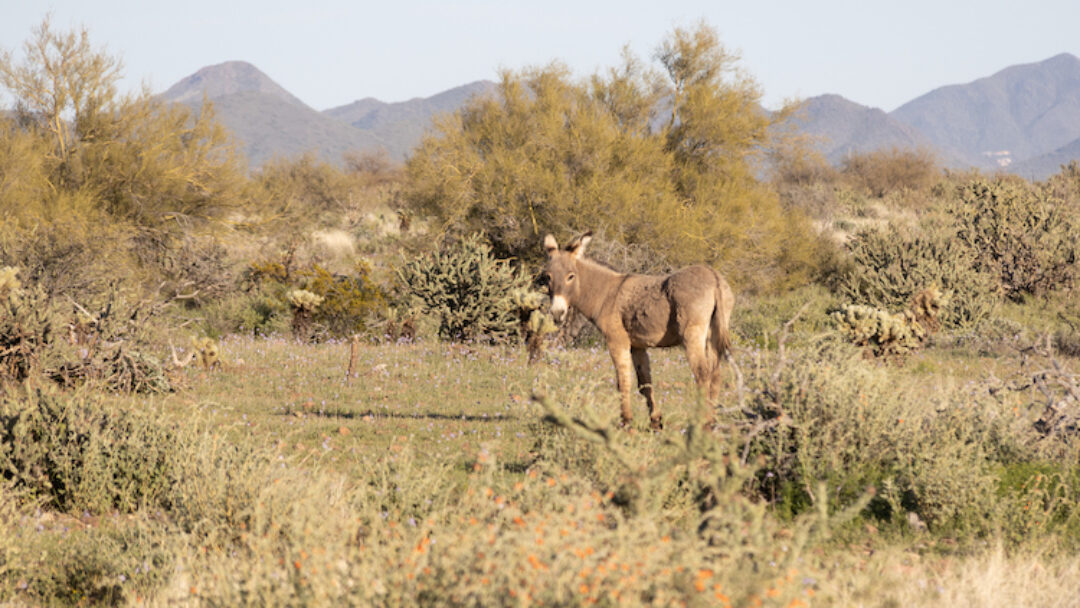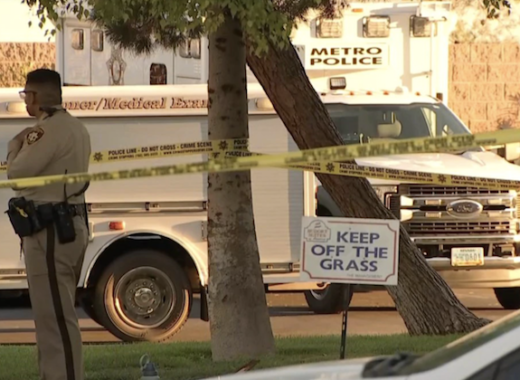Come Jan. 8, the Bureau of Land Management in Arizona is aiming to clear a maximum of 1,000 wild burros from the Black Mountain Herd Management Area located near Kingman.
According to the agency, the Black Mountain herd has an estimated population of 1,925, which is more than three times higher than what is considered appropriate for the region. The gathering is anticipated to take eight weeks.
Herd health, habitat conditions, and roadway safety are all highlighted as significant matters by BLM due to the current high number of animals.
According to experts, wild burros lack any natural predators, causing their population to grow quickly. If not moderated, their herds will double in size every five years. This gathering is to resolve the issues regarding their health and overpopulation, in order to maintain a natural balance in the Black Mountain Herd Management Area.
Experts believe if left unchecked, populations can have a detrimental effect on the environment, such as endangering native wildlife and plants, decreasing water quality, and adversely affecting the health of the herd.
Due to the larger herds, burros have been pushed to explore beyond the HMA in search of food and water during especially hot and dry periods.
Over the recent years, a number of burros were hit by cars in and around the Black Mountain Herd Management Area. It was requested by various communities in Mohave County that the Bureau of Land Management address the issue of too many wild burros.
What methods are used to take in the burros?
Arizona is home to more wild burros than any other state, with an approximate population of 6,205 as of March. This species is protected by the Free-Roaming Wild Horses and Burros Act.
The agency has planned to utilize helicopter-aided techniques in order to assemble the animals, capture them and transfer them in trucks to places where they will be given vaccinations and medical inspections by veterinary doctors.
The Comprehensive Animal Welfare Program of the Bureau of Land Management must be followed during the process, and it must be done in the presence of a veterinarian with the U.S. Department of Agriculture Animal and Plant Health Inspection Service, according to BLM.
Gathering techniques that utilize helicopters have come under public examination recently.
The American Wild Horse Campaign organization reports that roundups using helicopters can be more hazardous to burros than horses because their tendency to run away leads to longer pursuits that place the animal in danger.
In May, changes to the Free-Roaming Wild Horses and Burros Act were proposed to the House of Representatives that addressed the utilization of helicopters.
Within 12 months of this Act’s enactment, the Comptroller General shall submit a report to the House of Representatives’ Committee on Natural Resources and the Senate’s Committee on Energy and Natural Resources, which outlines humane alternatives for managing wild free-roaming horse and burro populations that do not involve the use of helicopters or fixed-wing aircraft.
Animals taken into captivity will be transported to the wild horse and burro facilities located in Florence or Ridgecrest, California. Many of these animals will be qualified for adoption and sale through the BLM Wild Horse and Burro Private Placement and Care Program.
The Humane Society of the United States set up a fertility control program in which female burros are administered with Porcine Zona Pellucida (PZP). This vaccine temporarily halts their reproduction, providing an alternative to having to capture and keep hundreds of wild burros in facilities. After being treated, the “jennies” are then released.
At the start of Fall, the agency initiated a 30-day period for public comment on a draft 10-year plan concerning the removal of burros and the application of fertility-control methods in the Alamo, Big Sandy, and Havasu herd management areas of western Arizona, referred to as the Three Rivers Complex.








